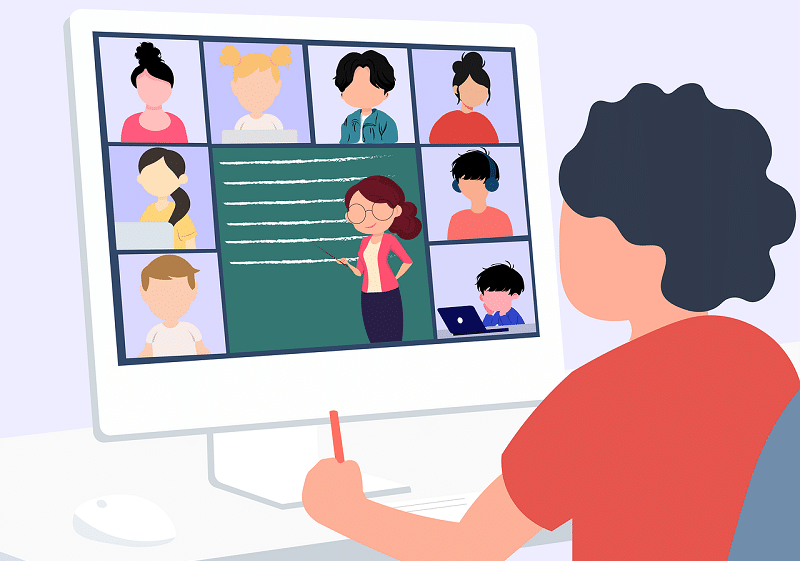November 26, 2020
Meenakshi Uberoi explores the challenges that teachers have faced when teaching online during the pandemic

The pandemic has reformed the way we have lived, learnt, taught, and worked. Over the past few months, the world has witnessed how educators have turned to technology like never before for seamless teaching-learning to continue. Thanks to the timely professional development that has been taking place over the last 2-3 years, the fragmented understanding of using technology for teaching came in very handy. Having interacted with approximately 50,000 educators across the country we realised that we did not have to begin from scratch, rather only accentuate what they already knew. Teachers had a baseline understanding of using tech tools for teaching-learning and simply had to learn about how online meeting tools work and how to weave their pedagogical practices into an online learning scenario. We must applaud educators across the world for this amazing transformation that has allowed education to continue seamlessly even in this unprecedented chaos.
During this period, new ways of teaching learning, both synchronous and asynchronous, occurred majorly due to the need to continue learning. However, there are many challenges that educators are still facing as they struggle with engaging students in the way they used to during F2F teaching as for the longest time ever, educating is believed to be a flesh and blood experience. To move from lecture-delivery and controlled-learning scenario to shifting gears to shared onus of learning between student, teacher and parents is a tall ask. So, what is it that educators need to do to engage students in learning processes and seek parent partnership when required?
Firstly, educators must communicate the new expectations to students and have essential agreements around accepting the same. We must understand that this is a new space for even students, and they have been using online platforms for pleasure in their own ways which are usually not monitored or orchestrated by adults. This is a new way of learning for them as well and they will need to be guided about manoeuvring through this phase of their learning life. The rules and procedures that the teachers formulated for face to face learning helped bringing in structure and focus for classes to run smoothly. Similarly, teachers need to have the essential dialogue about the policies and procedures of online learning, form essential agreements and have a clear understanding about the expected norms and behaviours. One such example where we witness the need for such information is when we hear teachers tell us that students waste a lot of time looking for learning materials and much time is wasted when they have to wait for the student to get a particular book or material. In this case, the educators can simply inform students a day before about the requirements for the next class and check with students before beginning the session if they have the required material and give them an initial 2-3 minutes preparing for the same. In an online meeting, the teacher can display a checklist on-screen which can help students become self-reliant. For teachers to use the online meeting time effectively, it is imperative that they plan meticulously. Treating online teaching as close to face to face teaching by following the same routines, procedures and policies, teachers can leverage the online meeting time to the maximum.
RECOMMENDED: https://global-edtech.com/category/community/
Secondly, it is important to ‘pause n play’ at regular intervals during an hour-long online meeting. We all know student’s attention waivers very easily thus it is important that teachers have a plan to pause for interaction, action or reaction. This can be easily done by beginning the session with a simple question using an online poll or raise-your-hand feature to check-in on students about how they are doing. Once the poll is taken the teacher can give a shout-out or praise a few students or might even reach out to someone using one-on-one chat if the student is not feeling fine. Such regular check-ins help foster student-teacher relationship, brings in a sense of belongingness and creates connectedness with students, just the way they did back in their classrooms.
Another important aspect of online learning is the challenge of getting students involved in the learning process and increasing their commitment towards their own learning. Teachers can use a variety of tools to ignite thinking and stimulate minds to think critically and analytically about the concept on hand. To begin with the teachers can use tools like Forms to ask questions to gauge prior knowledge and then at various places during learning, pause for a quick check for understanding or ask a thought provoking question for students to answer using Whiteboard or any mind-mapping tool. This helps students become more participative and gets them interested in the session. Another vital part of active learning is hearing student voices and making sure there is place for students to share their thoughts, ideas and information. Flipgrid is one such tool that can enable the quietest voice in the room to be heard. Not only in synchronous mode but also in the asynchronous learning mode, teachers can share a Flipgrid for students to post responses and maintain continuity in learning. This develops a positive attitude towards learning, increases accountability and brings in a sense of ownership towards their own learning.
As we are in the process of transformation, I’m sure just like me you’ll have your own hack to share and if you do please do tweet it away by clicking on my Twitter handle (@MeenakshiUberoi) and be sure that I’ll catch that and respond to you. I’ve shared here a piece from my experiences about what I hear from educators as I meet them to talk about leveraging technology in teaching-learning and there are many more ways of making remote learning meaningful and impactful. I very much believe in building educator communities so that we can learn from each other’s experience and enrich others with our own and I sincerely hope you do too.
Looking forward to your hacks!










0 Comments